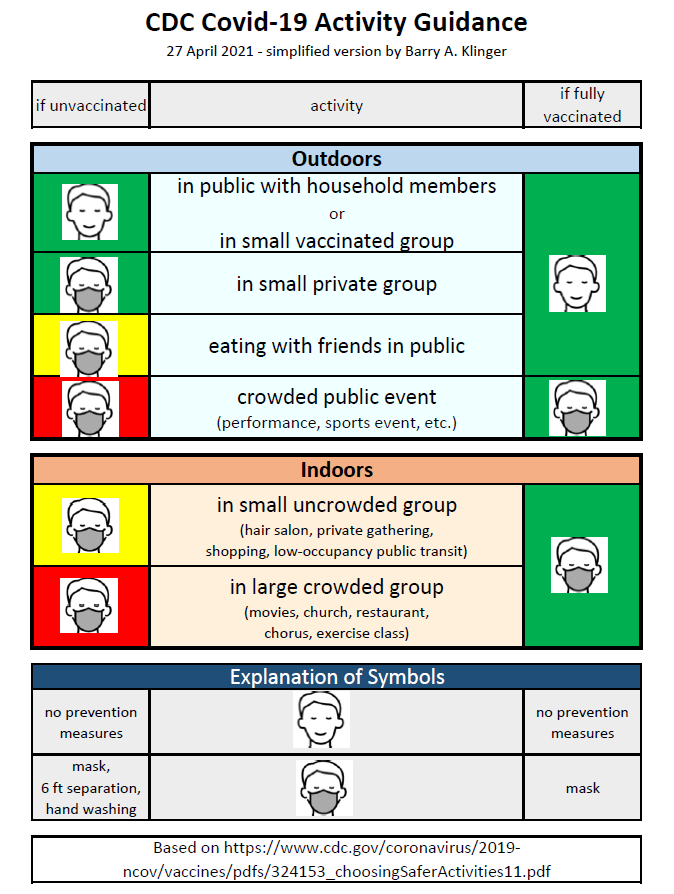
Physical Distancing for the Vaccinated – Spring Edition
The Centers for Disease Control (CDC) has issued new guidance for mask wearing and other Covid-19 preventative measures based on vaccination status. They include a graphic summary, which I’ve simplified here. I think theirs is too wordy and unnecessarily puts similar activities with identical recommendations into separate categories. So I think mine is better, but consult with the official CDC guidance if you have any questions about an activity.
When does the CDC consider you [fully] vaccinated? Two weeks after your last dose (#2 for Pfizer and Moderna, #1 for Johnson & Johnson).
An important category is missing from the chart: small indoor groups of vaccinated people. Here is the exact wording from the guidelines:
Fully vaccinated people can:
- Visit with other fully vaccinated people indoors without wearing masks or physical distancing
So what if you are going back to an office at work in which everyone is vaccinated? Does that count as a visit or is it some other category that the guidelines don’t discuss? The guidelines also say
Follow guidance issued by individual employers.
My employer, George Mason University, requires face coverings on campus and in university buildings, except (according to University Policy Number 1415) when physically distanced outside, eating, alone in a room inside, and some other exceptions. 2 June 2021 Revision: George Mason University issued new guidelines relaxing mask requirements for vaccinated people.
My graphic gives guidance for unvaccinated people in a group of vaccinated people, which logically is impossible. The wording from the CDC chart makes more sense: “Attend a small, outdoor gathering with fully vaccinated family and friends”. Similarly, if you follow the advice to wear a mask while eating with friends or inside a restaurant, assume that means “except when you are actually eating”!
The colors of the boxes with the face graphics are what you would expect: according to the CDC’s original graphic, green is “safest”, yellow is “less safe”, and red is “least safe”.